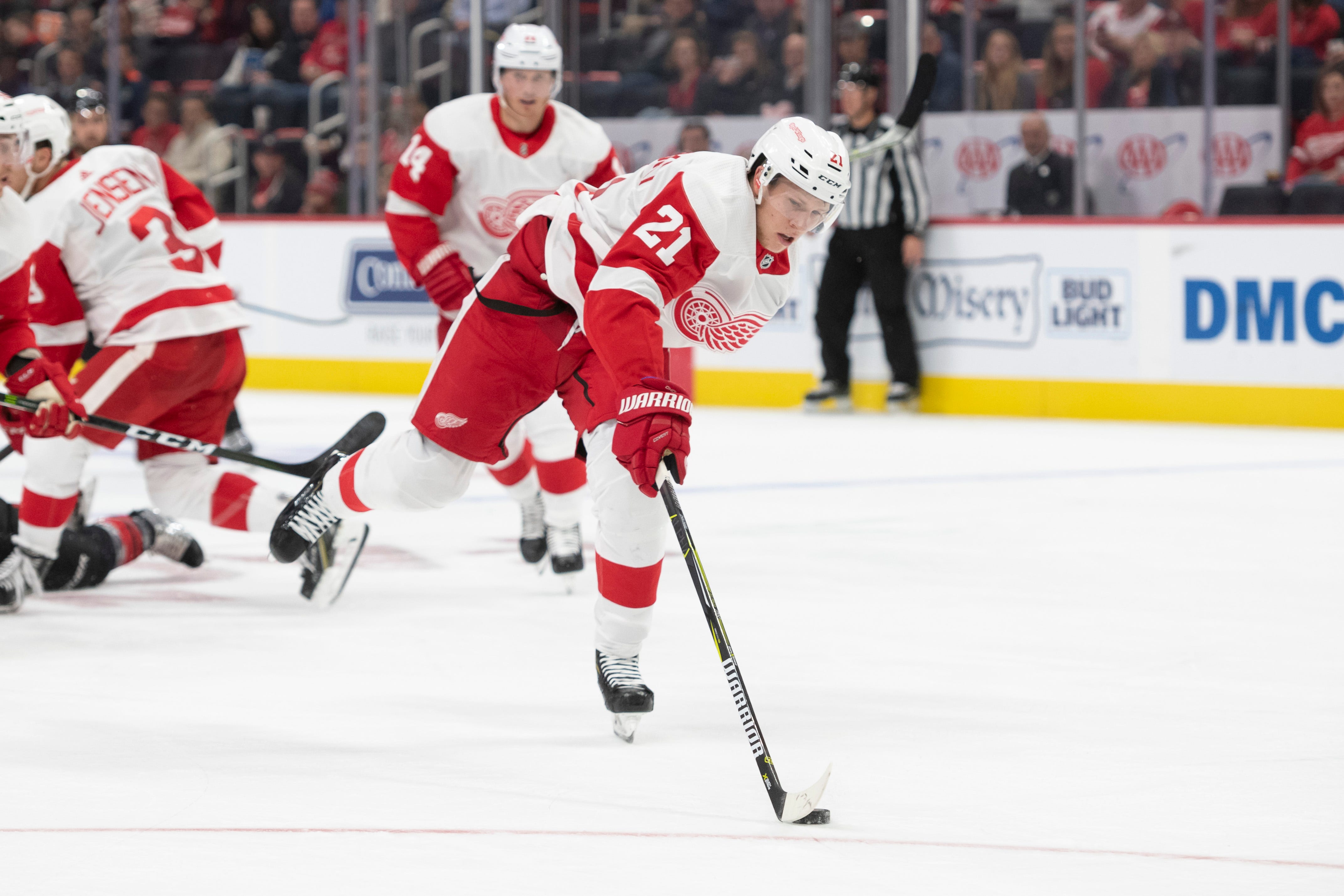Special forces: Red Wings rise in power play, penalty kill
 Ted Kulfan
Ted Kulfan
Detroit – Take your ranking on both the power play and penalty kill, add them up, and if the number is less than 20 you’re doing a good job.
The majority of NHL teams use that general rule to judge how their special teams are doing.
The Detroit Red Wings ranked ninth on the power play (at 26.1 percent) and 10th on the penalty kill (82.1 percent) heading into Thursday’s games.
The Wings gladly will take that at the end of the season. And even now, just 15 games into a season that has been a massive roller-coaster ride, there are good feeling about the special teams.
“Both assistants have had good plans from day one, that’s No. 1,” said coach Jeff Blashill, giving credit to assistants Dan Bylsma (power play) and Doug Houda (penalty kill). “They’ve done a good job of making adjustments when needed. We’ve had guys on our penalty kill over the course of a couple years up front, a number of them have killed, so they’ve done a good job of getting better at it. Whether it was Christoffer Ehn early (in the season) or Jacob de la Rose lately, they’ve been good additions.
More: Red Wings' Frans Nielsen anxious to play, but understands need to be careful
“On the power play we’ve had some additions that have helped, certainly Dennis Cholowski (on the point) and Michael Rasmussen with net presence. Guys have done a good job executing.”
Ten Red Wings have power-play goals, led by Rasmussen and Thomas Vanek with two each.
The special teams were a key reason the Wings’ struggled in the standings last season, and cost assistant coach John Torchetti his job. Torchetti was in charge of the power play.
The Wings ranked 24th on the power play (17.5 percent) last season and weren’t much better on the penalty kill – 23rd at 77.5 percent.
Bylsma’s success with power plays in his career was one reason Blashill added him on staff, but importance of improving both special teams was vital.
“It was a point of emphasis, but it was last year, as well,” Blashill said. “We just felt for us to finish higher in the standings we needed top-10 specialty teams, and we didn’t get it done last year and the standings reflected that,” Blashill said. “Especially with the number of close games we’re in, we’re in a league where the majority of games are one-goal games and we’ve certainly been in tons of them.
“Specialty teams can make a difference. With that said, it’s early and it’s a relentless league, so we better keep getting better at it.”

Forward Dylan Larkin is a key player on both units and sees multiple reasons for the success of the special teams.
“The power play has been scoring big goals for us,” Larkin said. “We’re simplifying it, using different looks. Guys have been in and out of the lineup, key guys, and we’ve had great depth with guys coming in and scoring big goals.
“For our PK to be good, our goaltender has to be our best penalty killer and so far, Bernier (Jonathan Bernier) and Howie (Jimmy Howard) have been. If we continue that, we’re going to help ourselves and give ourselves more chances to win.”
The Wings are getting pucks to the net on the power play, which isn’t particularly easy these days in the NHL.
“There’s a few more looks that we’ve focused on,” defenseman Mike Green said. “They seem to have more of a net presence and getting pucks there. The thing about the power play is, guys (defenders) are fully committed to blocking shots. Unless you can create open space, white space on the ice, you’re not going to get pucks through.
“There’s that split second where you can utilize that open space and get pucks to the net, and that’s sort of what we are focused on.”
The Wings were successful early last season on the penalty kill being aggressive and utilizing their speed – until injuries decimated the unit.
They scored nine shorthanded goals last season, and already have four this season (Larkin has two), using their speed to full effect.
“Trying to disrupt and use our speed, change, then stay fresh,” Larkin said. “All our penalty killers can skate, so we’re trying to get up the ice and disrupt and get off and stay fresh, so guys stay on the ice for 15 or 20 seconds and start all over.”
A shorthanded goal often changes the momentum of a game, demoralizing the team that allowed it.
“If you get chances shorthanded, you put the other team on their heels,” Blashill said. “I guarantee you, when you’ve had chances shorthanded, the power play meeting for the other team starts with a couple examples of that, and right away, you’re thinking defense instead of offense on the power play.
“Certainly doing a good job executing on the kill is important, but anytime you can put the other team on their heels, it’s a critical thing and our guys have done a good job of not only getting those chances but scoring on them.”
Top-10 units
Top teams in power-play percentage and penalty-kill percentage heading into Thursday’s games:
POWER PLAY
1. Washington, 34.0
2. Winnipeg, 33.3
3. St. Louis, 30.8
4. Toronto, 30.0
5. Boston, 29.5
6. Ottawa, 27.1
T7. New Jersey, 26.4
T7. Colorado, 26.4
9. Detroit, 26.1
10. Tampa Bay, 25.4
PENALTY KILL
1. Arizona, 90.2
2. Tampa Bay, 89.3
3. San Jose, 86.5
4. Minnesota, 85.2
5. Colorado, 84.1
6. Toronto, 83.7
7. Montreal, 83.3
8. Los Angeles, 82.9
9. Vegas, 82.5
10. Detroit, 82.1